Plant green beans step by step | How and when to plant
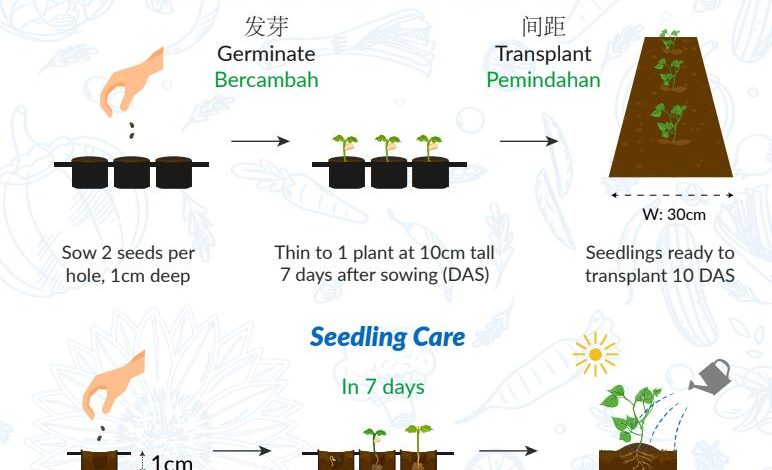
Growing green beans or green beans (Phaseolus vulgaris) is the subject of our article today. This plant belongs to the family of leguminous or fabaceae ( such as beans, lentils, peas or soybeans). They are vegetables with light and shallow roots, but some varieties can reach up to 3 meters in height.
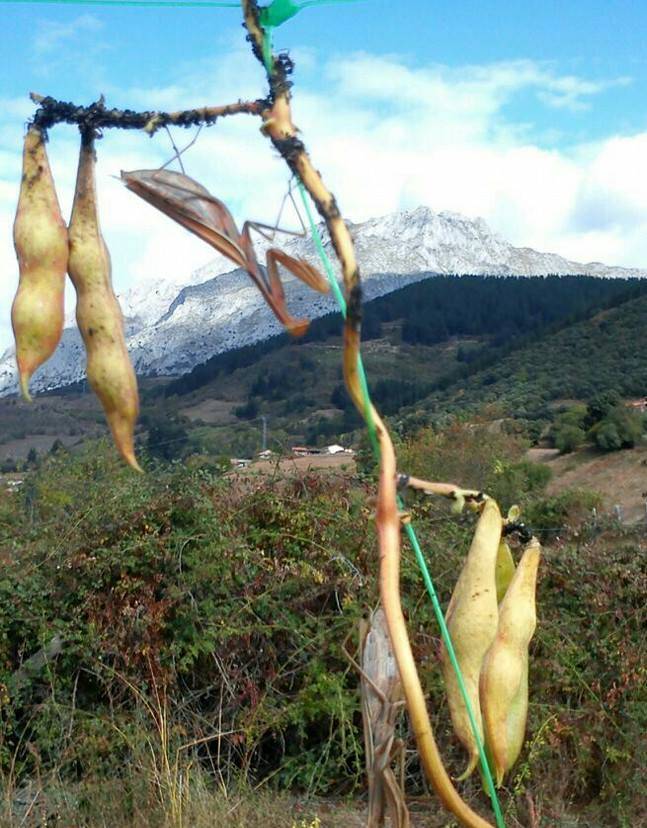
In this post we will give you the keys to learn how to plant green beans and take care of the plant in an ecological way, considering techniques such as crop rotation or association, mulching, and the substitution of chemical fertilizers and artificial insecticides for natural or ecological preparations.
Companion Crops: Benefits of Planting Beans Together with Other Plants
Legumes are soil-improving plants , since the nodules that form on their roots help to fix nitrogen from the air in the soil, so that plants have more nitrogen available, and this is a basic essential nutrient for their growth and developing.
In garden planning it is very useful to include plants of this type (legumes such as green beans, broad beans, chickpeas…) in crop rotations and associations.
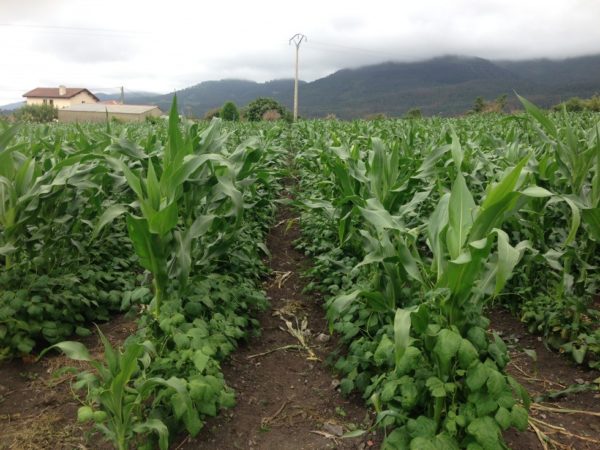
Growing green beans in the garden is a good option to improve or fertilize the soil naturally. For this reason, it is a good idea to grow beans in those terraces or areas of the garden that in the previous season housed tomatoes, aubergines, pumpkins or other demanding vegetables with high nutrient requirements that «depleted» the soil. For the same reason, after the bean harvest, these fastidious crops may be next where the beans were planted.
The bean associates well with most garden crops: celery, aubergine, courgette, strawberry, cabbage, spinach, lettuce, corn, turnip, potato, leek, radish, cabbage, carrot… although it is not recommended to associate it with garlic, onions, beets, fennel and with other legumes.
It is also very interesting to grow green beans and then use the remains as green manure for crops of the next harvest, or simply cultivate them preceding demanding vegetables such as Swiss chard, broccoli, cabbage, potatoes and plants with fruits. larger such as cucurbits and nightshades.
Climate and soil to grow green beans
Relatively humid climate (but without many oscillations) and mild: optimum temperature between 18 and 24 ºC. Frosts are lethal and above 30ºC pod deformations and fruit abortion can occur. Best yields: climates that are warm but not too humid (too high humidity causes leaf diseases).
Beans are sun lovers, so you should look for a sunny area in your garden.
This crop is very demanding in terms of soil, although it prefers light and soft substrates, with good drainage and rich in organic matter. To achieve this, you can carry out relatively deep work (about 20 cm) in autumn and more superficial work (raking) to prepare the substrate before sowing in spring/summer.
Different types or varieties of green beans
There are many varieties of beans and they can be classified in many ways: by the type of pod, by the type of seed, by colour, varieties with or without string, beans with parchment or without parchment (beans «with parchment» or «to shell» can be eaten green but are usually dried to eat like «dried beans», while «without parchment» beans are varieties to eat green)…
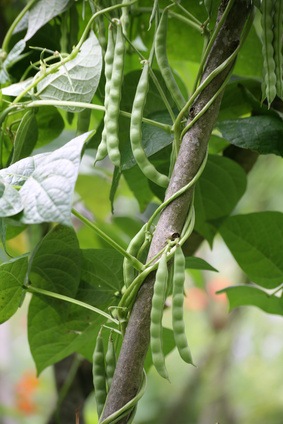
Another classification divides the varieties into two groups: the creeping, dwarf or low -growing varieties, about 30-40 cm tall, and the climbing or climbing varieties, which can measure up to 3 meters.
The varieties of green beans most cultivated in the orchards are the dwarf beans (such as the Annabel, The Prince, Mantecosa dwarf white or Garrafal dwarf varieties) since they do not take up much space, while in greenhouses they are usually grown more with pole beans, which are usually more productive, such as Perona or Buenos Aires, Helda, Strike, Blue Lake, Mantra RZ…
When deciding which variety of seed to buy, take into account aspects such as the precocity of the plant and the climate of the area (sometimes, if the variety is too «late», cool nights and rains can arrive before it is list the harvest, which would harm it), comfort (dwarf/tree varieties, frequent/infrequent harvest) or resistance to pests and diseases. It is best to opt for local varieties, adapted to the climate and local conditions.
When are green beans planted and when to transplant?
To sow beans, you can choose to do direct sowing or to make a seedbed for the production of seedlings that will later be transplanted to the definitive land (terraces, flowerpots, etc.)
But… When to plant beans? As for the sowing time, if you do protected sowing (seedbeds indoors or under glass) you can do it at the end of spring and if it is seedbeds outdoors or you are going to do direct sowing, the best time to sow beans is at early summer, when there is no longer any risk of frost.
Once the seed is settled in the soil in the right conditions, germination occurs. But… how long do beans take to germinate?
After the appearance of the radicle or first root, the plumule (from which the first leaves or cotyledons will emerge) emerges approximately 5 or 7 days after sowing.
After about 20 days in the seedbed, and as long as the bean plant has more than 2 pairs of true leaves, the seedlings will be transplanted to the definitive land (orchard beds, pots, etc.)
How to take care of a green bean plant (irrigation, fertilization and other tasks)
Growing green beans will not bring you too many headaches, as it is a crop that is not too demanding in terms of the substrate and does not require much care.
It will be enough for the land to be manured or fertilized with compost a few months before planting.
After planting in seedbeds and transplanting to the definitive land, you can carry out the following cultivation tasks to have an excellent harvest of beans:
- Continuous weeding for weed control during germination and seedling development.
- Trellis: in the vine varieties it is necessary to place stakes so that the plants climb as soon as the tendrils begin to sprout.
- Ridden or ridging: making a ridge or heap with the substrate up to the height of the first leaves improves the development of the roots and the «feeding» of the plant.
- Leafless: it consists of removing the oldest leaves and you can do it if the crop is prolonged and the plant becomes too bulky. This improves the quantity and quality of the harvest and, by increasing the ventilation of the plant, will reduce the risk of diseases.
- You can also cover the ground with mulch to keep the ground soft, moist and protected.
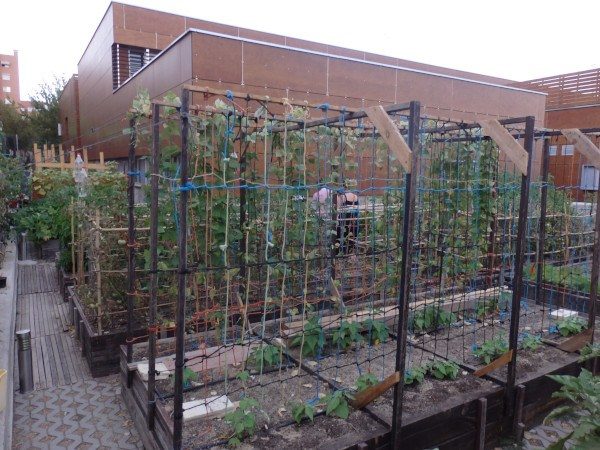
irrigation of the beans
The bean plant is quite demanding in terms of water. Watering must be frequent to always keep the substrate moist, especially when the plant is in flower.
The volume of irrigation applied depends on climatic factors (humidity, temperature and rainfall) and edaphological factors such as soil texture or salinity. In silt-clay soils, which retain a greater amount of water, the irrigations must be more voluminous and more spaced, while in sandy and light soils, as they have less retention capacity, shorter but more frequent soils must be applied.
Water at least 2 or 3 times a week and increase the frequency of watering during flowering and in very dry seasons (high temperatures and lack of rainfall). Irrigation using drip irrigation or another localized irrigation system is recommended, since the uniformity of irrigation and humidity is greater and the losses of irrigation water are lower.
Pests, bean diseases and other problems
The bean plant can be affected by typical orchard pests such as slugs and snails (especially when the plant is small), whitefly, aphids, spider mites, thrips…
Green beans can also be affected by the yellow mosaic virus (BYMV) or by diseases caused by fungi, such as powdery mildew, rust or various rots.
Find out how to combat each of these bean pests and diseases in the article on legume pests ).
Bean harvest How long does it take for beans to bear fruit?
The first leaves begin to unfold, and within two days of germination, the bean plants are about 6-8 cm tall. A month after planting, the plant can already be 1.5 meters tall and the first flowers appear, and after 40 days the first bean pods can be seen
You can start harvesting the beans about two months after planting. It is a staggered harvest: from May to October you can be picking beans from your garden.
You will need to harvest continuously (frequency from 3 to 7 days, depending on the variety and the time of the crop you are in), so that the plant continues to produce more beans.
The beans are kept fresh for a few days so, if you want to consume them green, you must do it quickly or freeze them. If not, you can also let them dry (some varieties) and use the dried beans for other types of dishes.
Good luck growing beans in the garden! We await comments with your experiences!
References
- Alfonso, C. et al., 1997. Maize-legume associations: their effect on the conservation of soil fertility. Mesoamerican Agronomy, vol. 8 (1), p. 65-73.
- Reche Marmol, J., 2005. Greenhouse cultivation of green beans. Publications Center of the Ministry of Agriculture, Fisheries and Food, Madrid (Spain).
- Fernándes de Sousa, M. & González de Lena, G., 2015. Horticultural Crop Sheets. Agrifood Technology, nº 16, pag. 10-18.
- Cubero, JI, 2017. Outdoor Horticultural Crops: Horticultural Legumes: Horticultural Peas, Beans, and Broad Beans. Cajamar Publications Caja Rural. Agriculture Series, No. 25, p. 703-741.

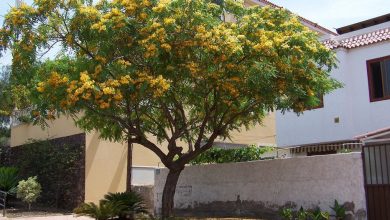
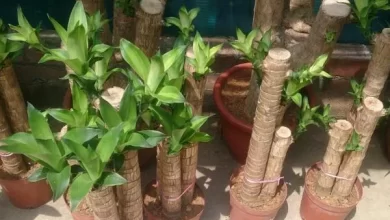

![Photo of Sowing Cabbage: [Growing, Care, Irrigation, Substrate and Pests]](https://www.complete-gardening.com/wp-content/uploads/2022/08/sowing-cabbage-growing-care-irrigation-substrate-and-pests-390x220.jpg)